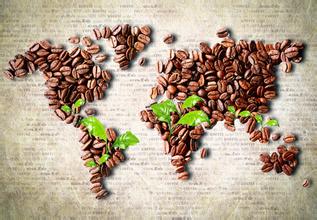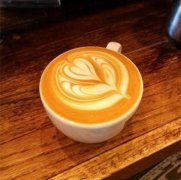Coffee Culture History Coffee History Chronicle
Coffee fruits found in Ethiopia in the 6th and 7th centuries

Rhazes, a famous doctor in the Arab region in the 10th century, is considered to be the first person in history to record coffee in the literature.
1100 yuan, the first recorded coffee trees were planted in the Arabian Peninsula. After roasting and cooking, the coffee was called "Gahwa", meaning "Islamic wine".
In the 13th century, people began to try to dry coffee fruits in the sun to obtain longer preservation conditions by reducing water content, which are still widely used today.
In 1454, a famous Islamic religious figure, out of gratitude, made public the mysterious drink of coffee, which was gradually transformed into a popular drink that can be seen everywhere in the streets and alleys of the Islamic area.
In 1475, two Syrians opened the first coffee shop in the Arab region, the Kanai Cafe, in Mecca, which later became known as a place for singing, dancing and telling legends.
In 1480, a group of Catholic Franciscan monks went to Ethiopia from Rome on behalf of the Holy see and saw coffee for the first time and wrote it in their travels.
In 1505, the Ottoman Turkish army went south to occupy the Arab region, tasted and fell in love with coffee
In 1554, the first coffee shop, the Canes Cafe, appeared in Istanbul, the capital of the Ottoman Turkish Empire.
In 1582, I thought a German doctor named Rovov had a detailed record of coffee.
In 1592, an Italian doctor and botanist made the first woodblock print of coffee plants and fruits.
In 1600, Venice merchants shipped the first batch of commercially imported coffee from the Yemeni mocha to Venice in the name of "Arabian wine". Subsequently, the first coffee shop was opened in Italy, which became a fashionable place for people to meet and talk.
In 1616, after careful arrangement and deployment, the Dutch stole a coffee seedling and a few coffee seeds from the Yemeni port of Aden and brought them to Amsterdam.
In 1650, a Lebanese businessman established the first coffee shop in Europe at Oxford University in England.
In 1651, Leghorn, a coastal port city in western Italy, gave birth to the second coffee shop in Europe and the first coffee shop in Italy.
In 1651, the world's first coffee advertisement was born in the form of a handwritten flyer that read: "England's first publicly produced and sold high-quality coffee drink, dealer Pascal Rossi." In Cornhill in St. Michel Lane... Credit guarantee ". This leaflet has been kept in the British Museum so far.
In 1652, the first coffee shop was opened in England, called "take a penny". As the name implies, you can get in and out of the shop for a penny and enjoy a cup of coffee.
In 1665, in London, a locksmith invented the coffee grinder.
In 1670, Dorothy Jones of Boston, the first coffee trader in the United States, was granted a license to sell coffee
In 1671, Nailong, a professor of oriental linguistics in Rome, weaved the story of "the Shepherd Caldi and the Dancing Sheep" in order to fight for the right to interpret the origin of coffee.
In 1672, the first cafe in Paris opened
In 1674, a petition for coffee by women took place in London. Housewives complain that their husbands always linger in cafes
In 1683, the first coffee shop in Vienna opened, supplied by Turks defeated on the battlefield.
In 1683, New York began to have a market that mainly sold green coffee beans, so coffee soon replaced must beer as the main drink for breakfast.
In 1689, the first street shop in Paris appeared, called Procob Cafe.
In 1690, the Dutch became the first merchant in the world to transport and grow coffee.
In 1691, Boston, then the largest city in North America, opened North America's first coffee shop, London Coffee House.
In 1700, the earliest coffee shop in Philadelphia opened, called Ye Coffee House.
In 1706, Joan van Hoorn, governor of the Dutch East India Company, transplanted coffee saplings from Java to a greenhouse in Amsterdam.
In 1714, the mayor of Amsterdam gave a coffee sapling to King Louis XIV of France.
In 1715, France transplanted coffee seedlings to the South American dependency of Guyana, becoming the first area in South America to grow coffee.
In 1718, the Dutch transplanted coffee seedlings to Suriname, a South American dependency.
In 1721, the first coffee shop in Berlin was born
In 1723, French officer Dikrou planted the first Central American coffee tree on the French Martinique island in the eastern Caribbean.
In 1727, the wife of the Governor of Guyana and Pacita, a Brazilian army officer, fell in love with each other and gave coffee saplings richly. Coffee saplings were taken to Para province in northwestern Brazil for planting, which started the coffee planting industry in Brazil.
In 1730, the British introduced coffee to Jamaica.
In 1740, the Dutch invented the method of washing coffee beans.
In 1750, the Greek Cafe in Rome opened.
In 1763, Venice had more than 2000 coffee shops
In 1779, a Spanish activist, Navarro, brought coffee to Costa Rica from Cuba.
In 1785, a coffee revolt broke out in Prussia because the consumption of coffee was limited to aristocrats, clergy and senior officials.
In 1788, Paris, France, had more than 1800 cafes.
In 1800, an archbishop of Paris invented the original coffee drip filter pot.
In 1808, Boston created the largest coffee shop in the world at the time, which was destroyed by fire.
In 1810, Le Roy, a coffee farmer on Bourbon Island, discovered a new variety of Bourbon round body, Bourbon pointed body.
In 1822, the first coffee extraction machine was made in France.
In 1828, a priest brought coffee saplings to the Hawaiian Islands and started the cultivation of Hawaiian coffee.
In 1840, the Scottish engineer Robert Napier invented the siphon pot; it is also said that it was Loeff in Berlin, Germany, who first invented the glass material and the siphon pot extraction method of upper and lower pots from 1830 to 1840.
In 1865, James Mason invented the coffee filter.
At the end of the 19th century, the Belgian Vidi invented the Belgian coffee pot.
In 1893, the Italian Alfonso Bialetti invented the first mocha pot.
In 1898, EmiL Laurent, a leveraged colony in Belgium, discovered a new variety of coffee, which was immediately accepted by a home company in Brussels, called Robusta.
In 1900, the Hill brothers in the United States first invented the packaging of vacuum tinplate or tin foil bags.
In 1901, Luigi Bezzera, an engineer in Milan, Italy, invented the steam coffee machine
In 1901, American Japanese scientist Satori Kato invented instant coffee.
In 1903, the Germans invented the coffee decaffeination technology.
In 1903, the Italian Desiderio Pavoni obtained Bethella's patent.
In 1905, Pavoni became the company to produce coffee machines, setting off the first wave of Espresso coffee machines.
In 1908, Melitta Bentz of Germany took the lead in applying for the patent of filter paper and filter cup, which has been popular ever since.
In 1910, George Washington invented the technology of producing instant coffee on an early scale, and founded the company (G.Washington Coffee Company) to produce instant coffee commercially.
In 1933, the first automatic coffee extractor was improved.
In 1935, a dwarf variety of Bourbon was discovered in Sao Paulo, Brazil, named Kaddura.
In 1938, Nestle developed a modern "spray drying method" in Brazil.
In 1938, the Italian Achille Gaggia invented the pressure bar espresso machine.
In 1941, German chemist Schulombom launched the filter cup and bottom pot connected to the follicle pot Chemex. All are made of heat-resistant glass, and the filter paper used is about 20% heavier and 30% heavier than ordinary filter paper.
In 1945, the coffee concentrator was perfected by the installation of a piston, which produced high pressure and extracted a thick layer of coffee oil.
In 1948, the Italian company Gaggia designed an improved Italian coffee machine pressurized by piston lever principle.
After 1960, the United States invented the electric drip filter, also known as the American coffee machine.
In 1961, the Italian company Faema produced the first pump espresso machine that used pump (Pump) instead of piston, which was the famous Faema E61.
In 1964, General Foods invented the freeze-drying method to make instant coffee.
In 1966, Alfred Peet opened a store in San Francisco to promote fresh, deep-roasted coffee beans.
In 1971, three of Pitt's apprentices founded Starbucks Coffee in Seattle.
In 1973, the first Fairtrade coffee was imported from Guatemala to Europe.
In 1974, Ms. Knudsen first put forward the concept of boutique coffee in the monthly Journal of Tea and Coffee.
In 1983, the American Association of Fine Coffee (Specialty Association of America, SCAA) was established.
In 1987, Howard Schultz acquired Starbucks and introduced the Italian concept of concentrated viewing.
In 1988, the first Fairtrade labelling initiative was launched in Europe, calling for support for coffee farmers in Mexico.
In 1992, Starbucks listed on NASDAQ, obtained funds, expanded its stores and entered the international market.
In 2003, it was known as the third wave of American boutique coffee-- the first year of coffee aesthetics.
In 2004, Seattle espresso machine owner Burkander teamed up with engineer Dan Urwiler to develop an espresso machine Synesso with adjustable water temperature in each brewing head.
In 2006, American AIRPOBIE launched Philharmonic pressure.
In 2007, Clover Black Coffee extraction system was developed. This system marries siphon and French filter kettle extraction principle, and can adjust the brewing temperature and time of coffee.
In 2008, Vince Fedele, president of VST, invented the Coffee concentration extraction Analyzer (ExtractMoJo).
In 2009, Costa Coffee, a well-known British coffee chain, insured the tongue of Gilano Gennaro Pelliccia, an Italian coffee cup tester, with British veteran Lloyds for 10 million pounds, making it the most expensive tongue.
In 2009, the world's first cola fermented coffee came out at the Paradise Bakery.
In 2009, Erik Perkunder, the boss of the Seattle espresso company, launched the epoch-making pressure-regulating espresso machine Slayer, which shocked the world.
In 2010, Panamanian Rosa Coffee set an auction record of $170.2 per pound.
In 2011, the world's most expensive coffee was born, with rare Yemeni Mocca beans sold for $211.5 a pound, a record price at a manor auction. It is reported that the coffee is sour and spicy and has a sour flavor similar to that of grapes.
At the end of June 2013, Chinese mainland closed its first ITC store on the East third Ring Road in Beijing.
Important Notice :
前街咖啡 FrontStreet Coffee has moved to new addredd:
FrontStreet Coffee Address: 315,Donghua East Road,GuangZhou
Tel:020 38364473
- Prev

The Origin, Origin and Brand History of Colorado Coffee
Colorado Coffee brand began in 1979 in Chicago, USA. In 1996, Nabi Saleh and Peter Irvine were granted franchises and baking rights for the brand in Australia and New Zealand. Since then, Colorado Coffee has officially launched a trip to Australia. Its first Gloria coffee store in Australia opened in Miranda (Sydney, Australia) in 1996, mainly in Australia.
- Next

Common sense of Coffee Culture the Story of a Cup of Antigua Coffee in Guatemala
Fragrant history a cup of Guatemalan Antigua coffee seems to let us see the sudden disappearance of the mysterious Mayans multiply in the ancient land, history brushed away their existence, history has achieved their eternity. If a person's wrinkles depict a person's path, then the smell of coffee remembers the origin of a cup of coffee: about its hometown and harvest year.
Related
- How did the Salvadoran coffee industry develop in Central America?
- What exactly does the golden cup extraction of coffee mean?
- The Origin of Coffee flower
- [2023 Starbucks World Earth Day] there are more meaningful things besides free Starbucks coffee!
- What kind of coffee is there in Spain? 9 Flavors of Spanish Coffee
- Aromatic African coffee| Kenya's coffee culture and historical production area
- Liberica Coffee Bean knowledge: the characteristics of Liberian Coffee beans of the three original species of Coffee beans
- The origin and formula of Spanish latte introduces the taste characteristics of Bombon coffee in Valencia, Spain.
- How to adjust the solution of over-extracted coffee
- What is the tasting period of coffee beans? What is the period of coffee and beans? How should coffee wake up and raise beans?

